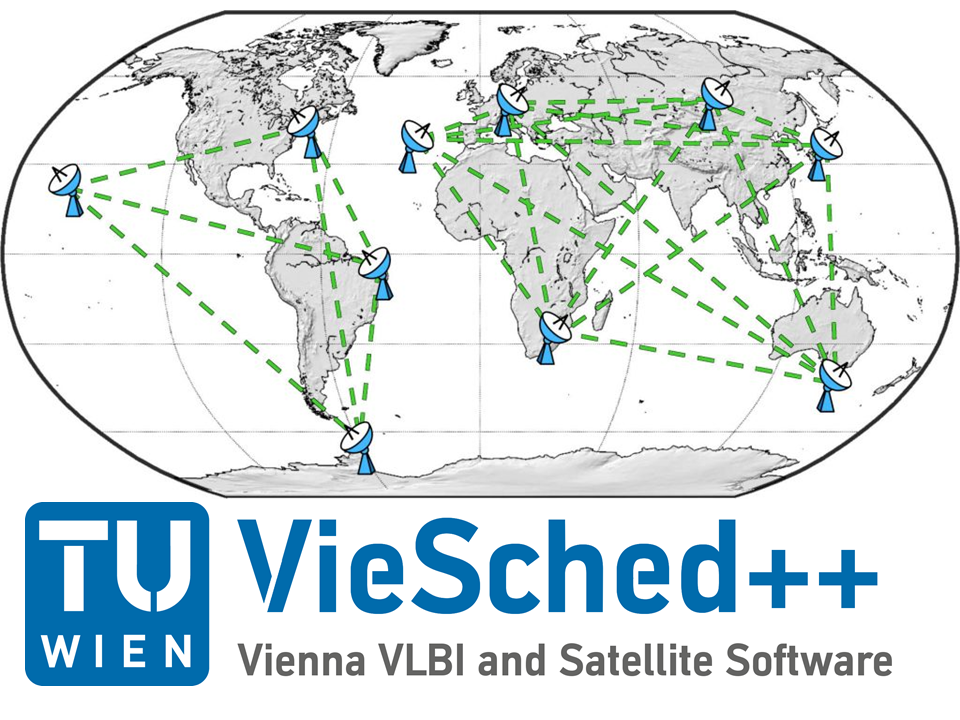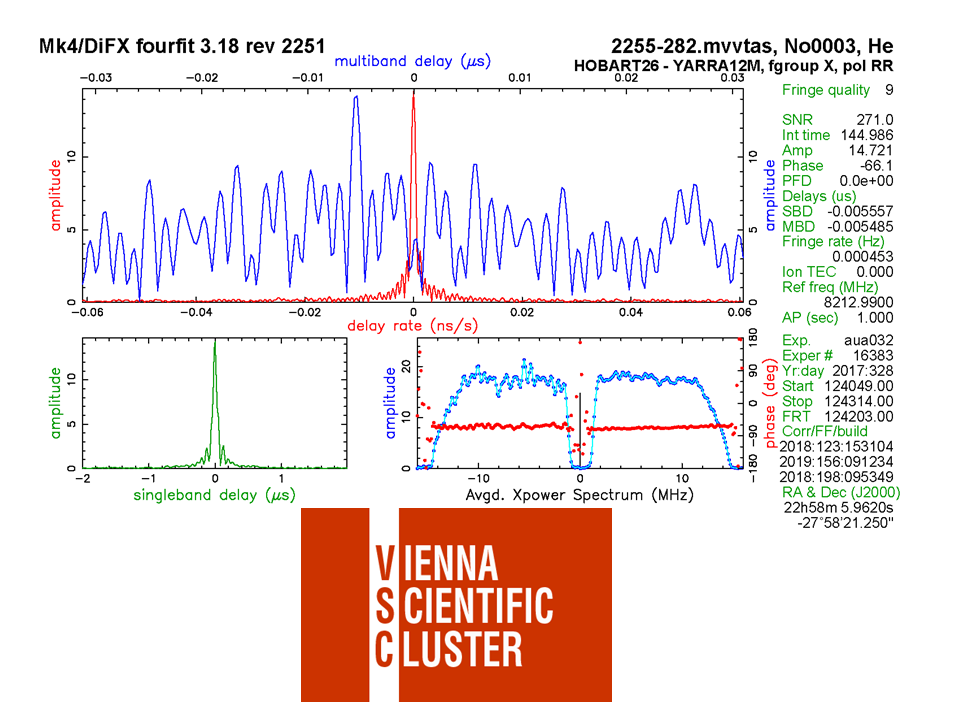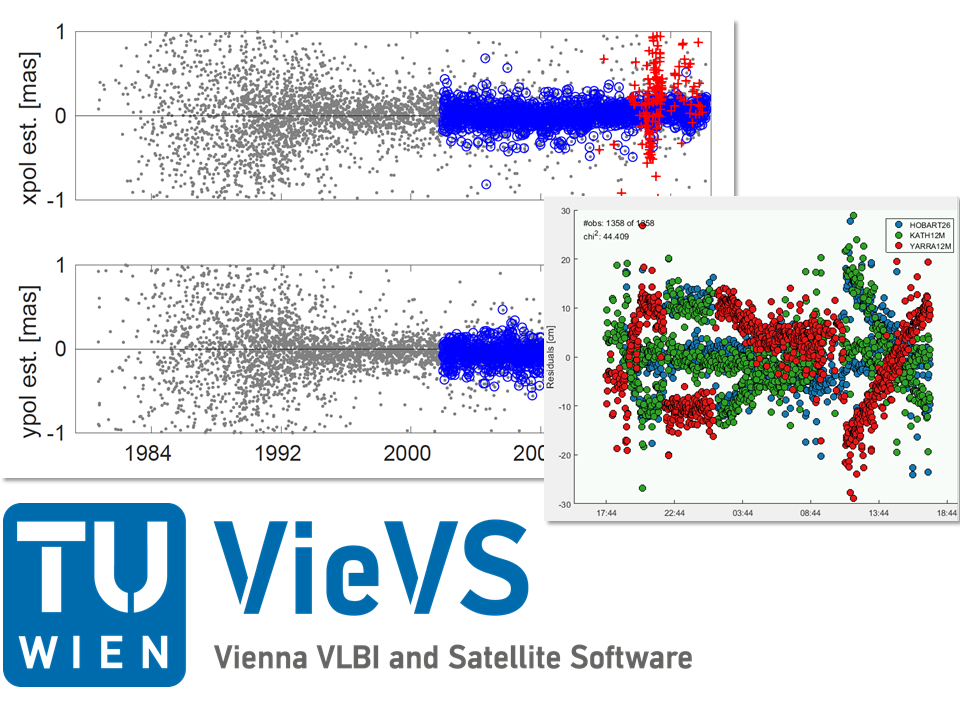VIENNA CENTER FOR VLBI
At TU Wien we can independently conduct a VLBI experiment from start to finish. A VLBI experiment can be split into four tasks. First the experiment has to be planned, also called scheduling. In our Scheduling Center the state of the art scheduling tool VieSched++ that was developed at TU Wien is used for this task. The second step is observing the session. Obviously this has to be done by the antennas and their ground staff. In the third step the recorded data has to be correlated. In Vienna we have access to the Vienna Scientific Cluster (VSC) which is one of the most powerful supercomputers in the world. We use this resource to correlate VLBI sessions within the Correlation Center. The correlated data is then analysed in the fourth step. The Analysis Center, which is operated by TU Wien and the Federal Office of Metrology and Surveying (Bundesamt für Eich- und Vermessungswesen, BEV), utilizes the state of the art Vienna VLBI and Satellite Software (VieVS), which is developed at TU Wien.
The ability to conduct a whole VLBI experiment from start to finish with software that was mostly developed in house provides unique possibilities for the Vienna VLBI Center which are only matched by a few other institutions on the globe.

Generate highly sophisticated VLBI observation schedules
Our new scheduling software VieSched++, smoothly connects observation planning with simulations to generate the best schedules for your specific purposes.

Process raw data records to derive delay observables
The VSC has the capacities to process vast amounts of raw observation data. The derived quantities are the basis for geodetic parameter estimation.

Estimate geodetic products
Using our in-house software suite VieVS for the analysis of VLBI sessions gives us great flexibility at estimating high quality geodetic parameters.
